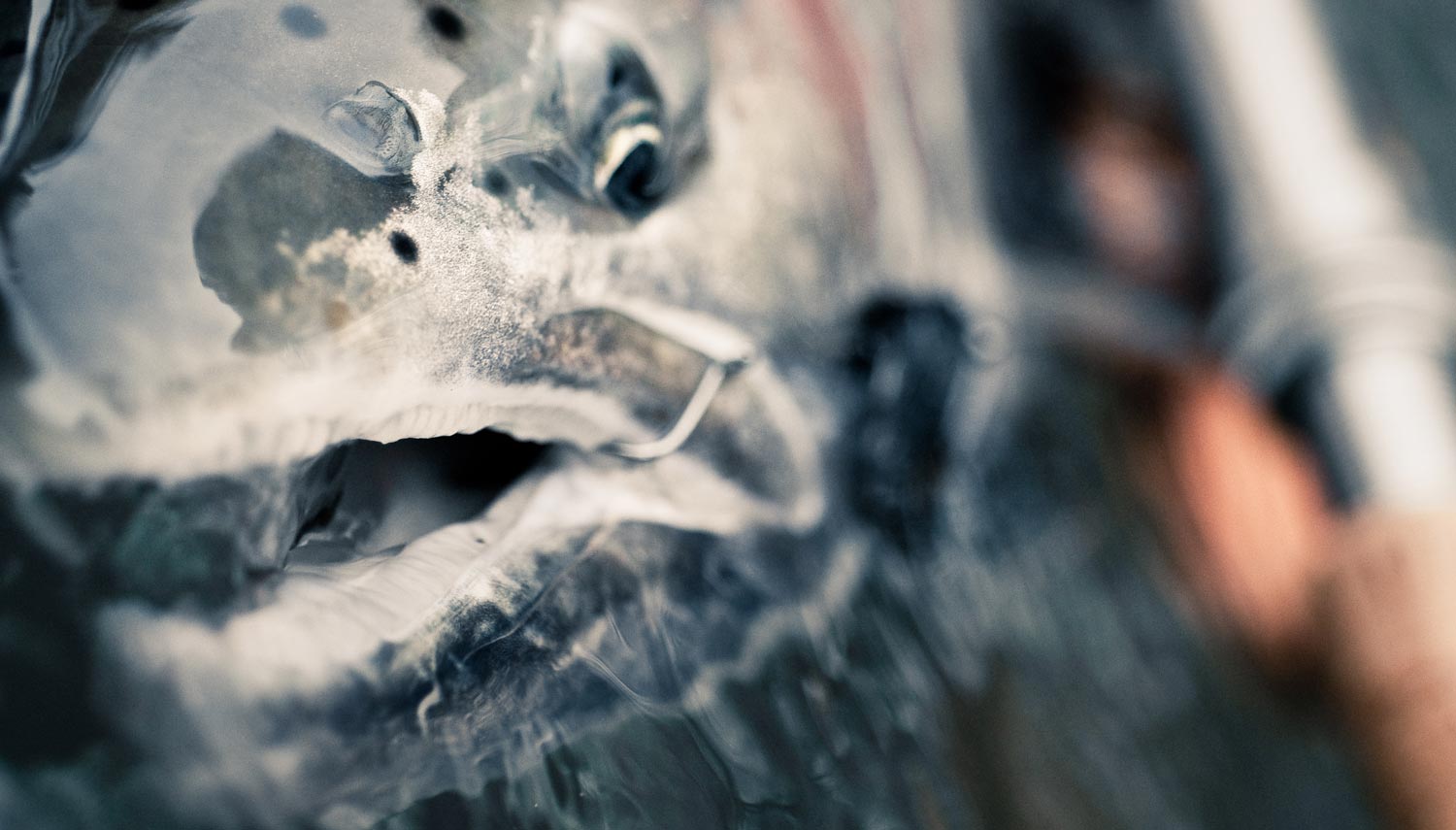By Louis Cahill
Let’s be honest, winter steelheading is a pretty tough game.
Summer runs can get downright giddy in comparison to the cold, dark days of winter. Swinging flies in tough conditions, for migrating fish whose numbers are small, when they are there at all, is just not for the faint of heart. Although the odds are slim, the rewards are great. There’s nothing like the feel of a heavy winter fish on the line.
In every fishing challenge, we try to stack the odds in our favor. To do that effectively, we must first understand why the fishing is challenging. In the case of winter steelhead, there are a couple of factors in play, which make or job harder than normal.
Winter fish are on a mission. All steelhead spawn at the same time. The timing of the runs is just when the fish enter the river. Summer fish come in early and hang out in the river, becoming more like trout in their habits. They have nothing to do but hang out and grab flies. Winter fish come in hot to spawn. Fish entering the river in March may only be in the river for a week or two. They have a sense of purpose and that purpose does not include eating flies.
All fish are less aggressive in cold water. Hanging out in 40 degree water doesn’t put any of us in the best mood. It’s the same for steelhead. You will simply get fewer eats from any given fish in cold water than in warmer water.
Of course the biggest reason that winter steelhead are so tough to catch is there are just fewer of them. Fewer every day, it seems. The fish who do make the winter run are covering a lot of water quickly, so any time you are swinging the fly in winter you have to wonder if there are even fish to see it. Well, don’t give up. The fish are there and I’m going to give you a tip on how to catch them.
Consistency is King.
Swinging flies for winter steelhead is all about covering water effectively. It’s not just a matter of hucking the fly as far as you can and letting it ride. It’s about reading the water, knowing where the fish are most likely to be, and covering that water with consistently good presentations.
The skills which pay off in the winter are clean, straight casting rather than long casts, good mends that sink the fly, careful swings that keep the fly moving at just the right speed. Remember that you are trying to maximize your opportunities at every move. You will be searching hard to find a fish who will play. Your presentation needs to be perfect when you find him.
Slow everything down for winter fishing. Take shorter steps between casts. Cast before you step, then mend carefully and step down with the line as the fly sinks. Follow that fly in nice and slow and keep the gentlest of bellies in the line.
Take care with your casting and be sure the line turns over straight and full on every cast, even if it means making a shorter cast. It’s better to make a shorter swing than a long but ineffective one. Check your fly and the sharpness of your hook often.
Do every thing you can to make each presentation perfect and consistent. That’s how you cover water effectively, and in the winter, that’s what puts fish in the net. When you get blanked, and you will, don’t let it shake your confidence. Those big winter fish are there for you. It’s just a tough game. That’s why we love it.
Join me for some hot summer steelhead action on the Deschutes!
Louis Cahill Gink & Gasoline www.ginkandgasoline.com hookups@ginkandgasoline.com Sign Up For Our Weekly Newsletter!
Sign Up For Our Weekly Newsletter!


Great tips! You have covered the small things which are exceptionally important! And even more so in cold water.